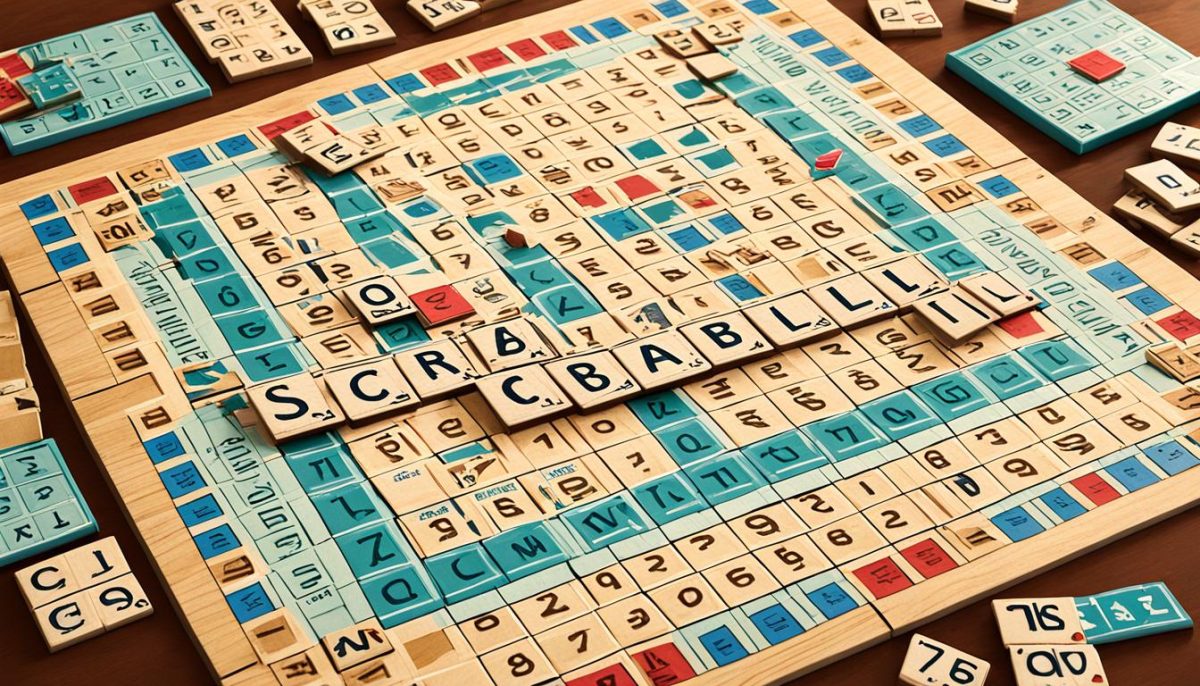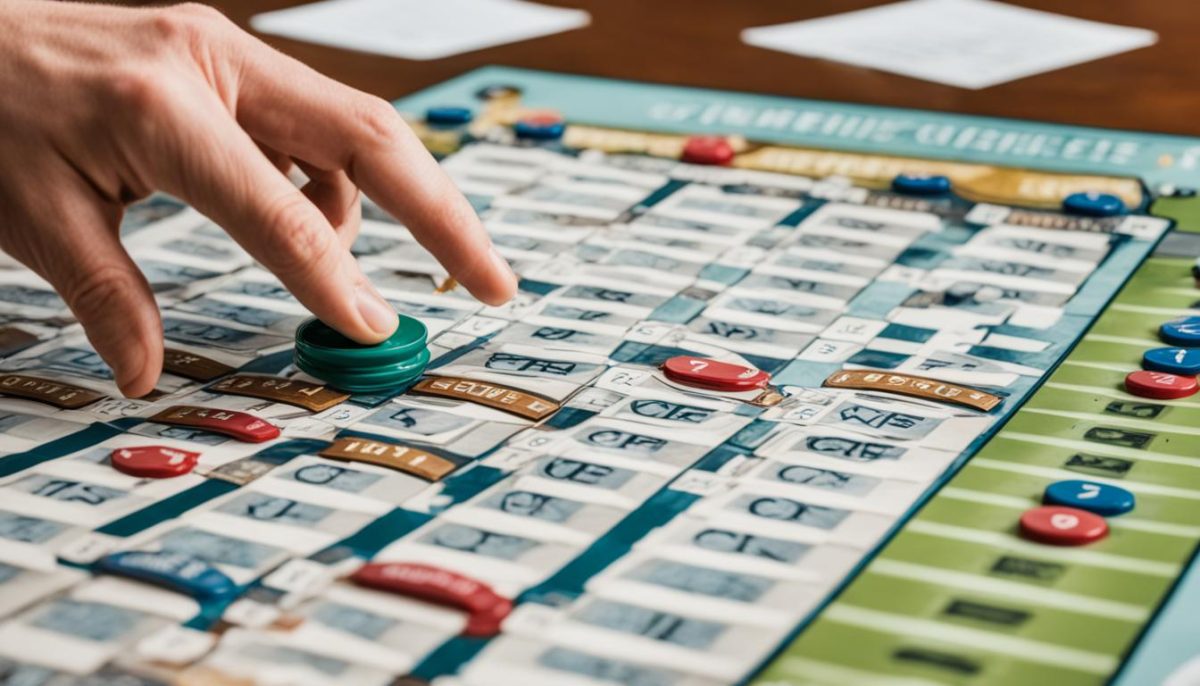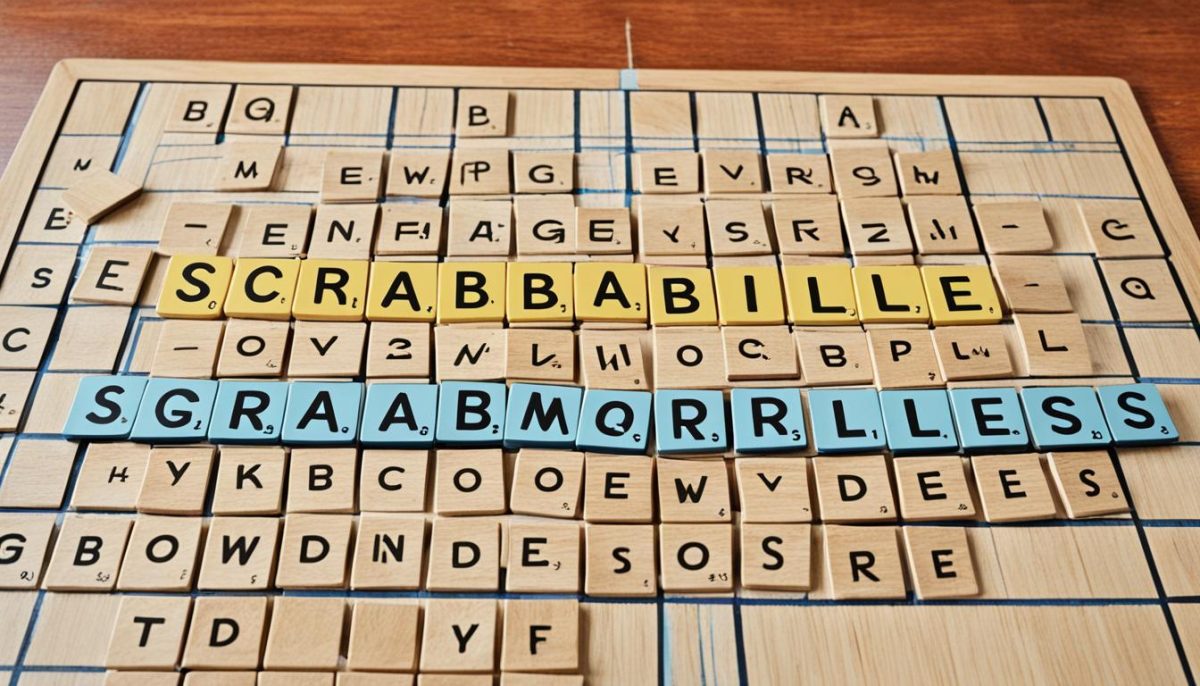Scrabble stands as one of the most iconic word games globally, offering a perfect blend of language skills, strategic thinking, and fun. Originated in 1938 by Alfred Mosher Butts, Scrabble has since become a family staple and competitive sport across age groups, challenging players to showcase their word knowledge and scoring potential. Managed officially by Hasbro in North America and Mattel elsewhere, Scrabble allows 2-4 players to demonstrate their vocabulary prowess.
In this guide, I will introduce you to the fantastic word-building universe of Scrabble, detailing everything from the Scrabble board setup to advanced word game strategies. You will learn the essential Scrabble rules and how to improve Scrabble skills to enhance your gameplay and maximize your scoring opportunities.
Whether you’re a casual player or looking to compete at higher levels, this guide covers all aspects necessary to start your Scrabble journey.
Introduction to Scrabble
Delving into the origins of Scrabble unveils a fascinating journey for word game enthusiasts. In 1938, architect Alfred Mosher Butts sought to create a game combining chance and skill, resulting in the creation of Lexiko, later named Criss-Crosswords. This early version laid the groundwork for what we now know as Scrabble.
Over the decades, Scrabble has etched its place in board game history, charming millions by intertwining the challenge of word formation with strategic placement on a game board. An intriguing element for word game enthusiasts is Scrabble’s blend of luck and wit. Players draw letter tiles to form words, intertwining them on the grid much like a crossword game.

Scrabble basics include understanding the board layout, letter values, and the game’s structured yet flexible rules. Notably, the game has transcended linguistic boundaries and is now available in 29 languages, catering to a diverse global audience. Hasbro manages Scrabble in North America, while Mattel oversees its worldwide distribution, bringing joy to word game enthusiasts in over 120 countries.
To play, each participant draws seven tiles and takes turns forming words. Points are awarded based on letter rarity and premium squares that multiply scores. The iconic nature of Scrabble lies in its enduring appeal, making it a beloved crossword game that continues to captivate new generations of players.
Setting Up Your Scrabble Game
Setting up your Scrabble game plays a vital role in ensuring an enjoyable and competitive experience. A standard Scrabble set encompasses a game board measuring 15×15 grid squares, 100 letter tiles for the English alphabet, four tile racks for holding players’ letters, and a tile bag for random tile selection.
Choosing the Right Board and Tiles
Diversified Scrabble set versions offer something for everyone. From travel-friendly editions to opulent wooden sets, there is a wide array of choices. Themed versions like Harry Potter or Star Wars Scrabble add an extra layer of enjoyment. Collectors often seek out deluxe versions featuring turntables for simple board rotation and high-quality tiles, highlighting the essence of the game. Knowing the dimensions of your board and the letter tiles distribution aids in selecting the right set for your needs.
Understanding the Score Sheet
Understanding the Scrabble scoring system is paramount to mastering the game. Each letter has a designated value, with common letters such as ‘E’ and ‘A’ having fewer points, whereas uncommon ones like ‘Q’ and ‘Z’ amass higher points. Premium squares on the board, including double letter, triple letter, double word, and triple word tiles, can significantly boost your score. Expertly employing these squares is strategic, affecting the overall game success. Additionally, achieving a ‘Bingo’ by using all seven tiles on your rack results in a bonus of 50 points, amplifying your score. Game tracking and calculating Scrabble points precisely can immensely impact gameplay.
Rules and Basic Gameplay
Playing Scrabble begins with understanding the official Scrabble rules, which lay the groundwork for an enjoyable game. First, participants each draw one tile; the tile closest to ‘A’ determines the order of play. Players then draw seven tiles each, getting ready for the action to start. When starting the Scrabble game, the first word must be placed to cover the center star square, setting the stage for subsequent plays.

In Scrabble, word formation is the core of the game. Words can be laid out horizontally or vertically but never diagonally, ensuring proper structure on the board. All tiles placed during a turn must contribute to legitimate words. After every turn, players draw new tiles to keep their rack at seven, perpetuating the strategic flow of the game.
Strategically, players can challenge the validity of their opponent’s words if they suspect them to be invalid. Such challenges are integral to adhering to the official Scrabble rules while promoting strategic gameplay. If a word is successfully challenged, it is removed from the board, and the challenger maintains their turn.
Moreover, there are strategic elements to enhance gameplay, such as the concept of tile exchange and pass turns. A player can choose to pass their turn or exchange their tiles if they feel unable to form viable words. These moves, although they might seem passive, can be critical in positioning oneself better for future plays.
In essence, to play Scrabble effectively, one must embrace both the basic mechanics and the strategic nuances. Whether focusing on word formation or mastering the sequence of starting the Scrabble game, understanding the established rules is crucial for a coherent and competitive game experience.
Tips and Strategies to Enhance Your Gameplay
Successfully navigating a Scrabble game often means thinking several moves ahead and employing key strategies to capitalize on scoring opportunities. For those seeking to improve Scrabble play, I’d recommend focusing on a few foundational tactics. Firstly, using ‘S’ and blank tiles strategically can open up multiple high-scoring avenues, while ensuring you retain a balanced rack of letters. This balance aids in word formation and prevents getting bogged down with too many consonants or vowels.
A crucial element of strategic word game tactics is mastering two and three-letter words. These shorter words can fit into tight spaces and connect to other words, generating points from multiple directions. Managing your rack also includes exchanging tiles when needed to keep a versatile selection of letters. Monitoring and controlling the board is another high-scoring move; by blocking your opponent’s access to premium squares, you can limit their scoring potential while positioning yourself for more lucrative plays.
If you’re aiming for Scrabble tournaments, it’s essential to memorize frequently-used word lists and understand the probability distribution of tiles. Skills like knowing when to play defensively to protect a lead or take calculated risks to catch up showcase the depth of the game. By integrating these strategies, whether you’re a casual player or a tournament hopeful, you can significantly enhance your Scrabble skills and enjoy the complexity and excitement that come with every game.

